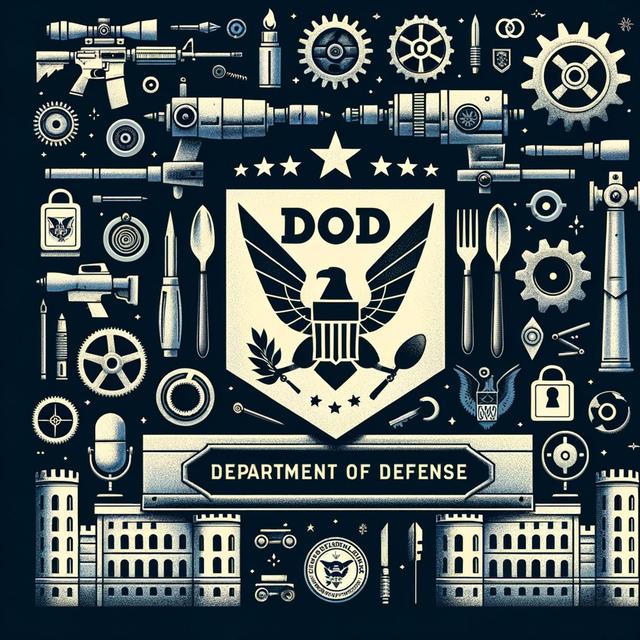
NDAA 2025: Enhancing DoD Cloud, sUAS Supply Chain, and LiDAR Procurement Policies
Jan 22, 2025•3 min
Episode description
Welcome to our latest podcast on the Department of Defense's latest news and developments. This week, we're focusing on the significant changes and updates that have been announced.
Starting with the most significant headline, the Fiscal Year 2025 National Defense Authorization Act (NDAA) has been signed into law, bringing with it several key provisions that will impact the Department of Defense and its operations. One of the major changes includes the requirement for the DoD to develop a policy to standardize the authorization process for cloud capabilities, aiming to enhance reciprocity between DoD components and reduce redundant authorizations[2].
Another critical development is the directive for the DoD to identify risks in the supply chain for small unmanned aerial systems (sUAS) and develop a domestic and allied supply chain of sUAS component parts. This move is part of a broader effort to decouple certain sectors of the U.S. economy from China, reflecting Congress's continued interest in addressing national security risks posed by specific Chinese companies[2].
Furthermore, the NDAA includes provisions that prohibit the DoD from procuring LiDAR systems manufactured by covered LiDAR companies, such as Hesai and its subsidiaries, if the manufacturing, software design, or network connectivity occurs in or is performed by entities domiciled in covered foreign countries like China, Iran, North Korea, and Russia[2].
In terms of budget allocations, the NDAA fences 5% of funds authorized for the Joint Warfighting Cloud Capability (JWCC) contract until the DoD provides a plan to transition away from the JWCC contract, including details on minimizing or ceasing development on the current contract and timelines for transitioning to successor contracts[2].
These changes have significant implications for American citizens, businesses, and state and local governments. For instance, the development of a standardized cloud authorization process will enhance the security and efficiency of DoD operations, which in turn will benefit national security. The focus on developing a domestic and allied supply chain for sUAS component parts will also support U.S. economic interests and reduce reliance on foreign entities.
As Inspector General Robert P. Storch emphasized, the DoD faces several management and performance challenges in FY 2025, including increasing military readiness, strengthening the capabilities and capacities of allies and partners, and improving financial management[5].
Looking ahead, the DoD must implement these new policies and provisions by June 21, 2025, which marks 180 days after the NDAA's enactment. Citizens can stay informed about these developments through official DoD websites and press releases.
For more information, visit the DoD Office of Inspector General's website at dodig.mil. Stay tuned for further updates on these critical changes and their impacts on national security and beyond. Thank you for listening.
Starting with the most significant headline, the Fiscal Year 2025 National Defense Authorization Act (NDAA) has been signed into law, bringing with it several key provisions that will impact the Department of Defense and its operations. One of the major changes includes the requirement for the DoD to develop a policy to standardize the authorization process for cloud capabilities, aiming to enhance reciprocity between DoD components and reduce redundant authorizations[2].
Another critical development is the directive for the DoD to identify risks in the supply chain for small unmanned aerial systems (sUAS) and develop a domestic and allied supply chain of sUAS component parts. This move is part of a broader effort to decouple certain sectors of the U.S. economy from China, reflecting Congress's continued interest in addressing national security risks posed by specific Chinese companies[2].
Furthermore, the NDAA includes provisions that prohibit the DoD from procuring LiDAR systems manufactured by covered LiDAR companies, such as Hesai and its subsidiaries, if the manufacturing, software design, or network connectivity occurs in or is performed by entities domiciled in covered foreign countries like China, Iran, North Korea, and Russia[2].
In terms of budget allocations, the NDAA fences 5% of funds authorized for the Joint Warfighting Cloud Capability (JWCC) contract until the DoD provides a plan to transition away from the JWCC contract, including details on minimizing or ceasing development on the current contract and timelines for transitioning to successor contracts[2].
These changes have significant implications for American citizens, businesses, and state and local governments. For instance, the development of a standardized cloud authorization process will enhance the security and efficiency of DoD operations, which in turn will benefit national security. The focus on developing a domestic and allied supply chain for sUAS component parts will also support U.S. economic interests and reduce reliance on foreign entities.
As Inspector General Robert P. Storch emphasized, the DoD faces several management and performance challenges in FY 2025, including increasing military readiness, strengthening the capabilities and capacities of allies and partners, and improving financial management[5].
Looking ahead, the DoD must implement these new policies and provisions by June 21, 2025, which marks 180 days after the NDAA's enactment. Citizens can stay informed about these developments through official DoD websites and press releases.
For more information, visit the DoD Office of Inspector General's website at dodig.mil. Stay tuned for further updates on these critical changes and their impacts on national security and beyond. Thank you for listening.
For the best experience, listen in Metacast app for iOS or Android
Open in Metacast